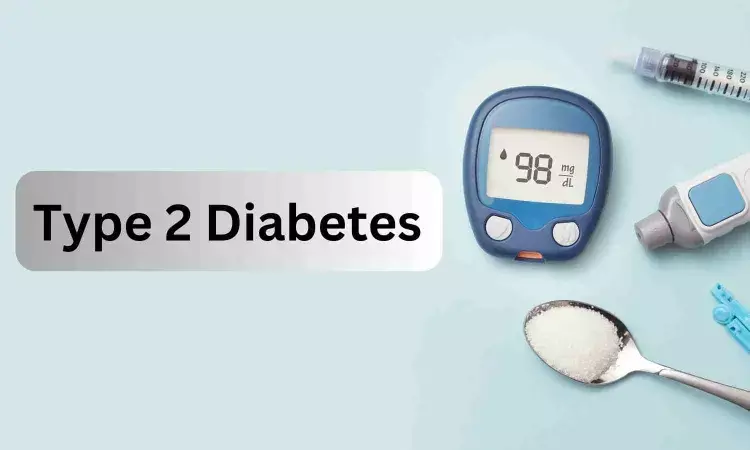- Home
- Medical news & Guidelines
- Anesthesiology
- Cardiology and CTVS
- Critical Care
- Dentistry
- Dermatology
- Diabetes and Endocrinology
- ENT
- Gastroenterology
- Medicine
- Nephrology
- Neurology
- Obstretics-Gynaecology
- Oncology
- Ophthalmology
- Orthopaedics
- Pediatrics-Neonatology
- Psychiatry
- Pulmonology
- Radiology
- Surgery
- Urology
- Laboratory Medicine
- Diet
- Nursing
- Paramedical
- Physiotherapy
- Health news
- Fact Check
- Bone Health Fact Check
- Brain Health Fact Check
- Cancer Related Fact Check
- Child Care Fact Check
- Dental and oral health fact check
- Diabetes and metabolic health fact check
- Diet and Nutrition Fact Check
- Eye and ENT Care Fact Check
- Fitness fact check
- Gut health fact check
- Heart health fact check
- Kidney health fact check
- Medical education fact check
- Men's health fact check
- Respiratory fact check
- Skin and hair care fact check
- Vaccine and Immunization fact check
- Women's health fact check
- AYUSH
- State News
- Andaman and Nicobar Islands
- Andhra Pradesh
- Arunachal Pradesh
- Assam
- Bihar
- Chandigarh
- Chattisgarh
- Dadra and Nagar Haveli
- Daman and Diu
- Delhi
- Goa
- Gujarat
- Haryana
- Himachal Pradesh
- Jammu & Kashmir
- Jharkhand
- Karnataka
- Kerala
- Ladakh
- Lakshadweep
- Madhya Pradesh
- Maharashtra
- Manipur
- Meghalaya
- Mizoram
- Nagaland
- Odisha
- Puducherry
- Punjab
- Rajasthan
- Sikkim
- Tamil Nadu
- Telangana
- Tripura
- Uttar Pradesh
- Uttrakhand
- West Bengal
- Medical Education
- Industry
Study supports link between saliva enzyme gene and Type 2 diabetes

A new Cornell University study brings additional clarity to the relationship between Type 2 diabetes and genes that express a salivary enzyme that breaks down starch.
It was previously known that people with more copies of the genes that express salivary amylase (called AMY1) produce more salivary amylase enzyme. The new paper, published in PLOS One, supports the idea that having more copies of the AMY1 gene may be protective against Type 2 diabetes, though additional long-term studies are needed to prove the theory.
If researchers do eventually prove a clear association between AMY1 copy number and diabetes, it could lead to genetically testing people at birth to predict their susceptibility.
“If you knew you had an increased risk of diabetes from day one, it may affect your daily choices, your life choices earlier on where you could prevent it from developing later in life,” said Angela Poole, assistant professor of molecular nutrition.
AMY1 genes have duplicated over time, and people can have between two and twenty copies. Salivary amylase breaks down starches into sugars, to start the digestion process, but some have questioned whether more efficient starch breakdown would exacerbate Type 2 diabetes. The disease is a chronic condition in which the body has trouble producing insulin or cells fail to properly respond to it, causing high blood sugar levels.
Researchers collected measurements from study participants of amylase activity very early in the morning after fasting and in the evening. They found that morning readings were much lower than they were in the evenings. “We looked into the literature and there is a diurnal effect,” Poole said. “Regardless of copy number, amylase activity differs throughout the day.” That means when researchers conduct studies, they should collect samples at the same time of day and not mix morning and evening readings.
When they compared participants, they found that salivary amylase activity was higher for each additional copy of AMY1 in those with Type 2 diabetes or prediabetes, compared to those without either. “If you have two people with a copy number of 10, and one of them has diabetes and one of them doesn’t, the person with diabetes will have higher readings, even with the same copy number,” Poole said.
The findings have led Poole to suspect that a higher copy number of AMY1 genes may be protective, though more study is needed to verify it.
Since amylase breaks down starch into sugars, common sense would suggest that a higher AMY1 copy number would increase blood glucose and be detrimental to people with Type 2 diabetes. Poole suspects that during chewing of starch, the body senses the glucose, and it causes people with a higher AMY1 copy number to release insulin (which regulates blood glucose and is lacking in diabetics) sooner, leading to a protective effect. Gut microbes may also play a role.
“I suspect that people with a lower copy number are at higher risk for Type 2 diabetes,” Poole said. But she added, it also depends on how much starch they eat. To fully answer these questions, future studies will need to control diet, follow people over a long time and have a large number of participants, she said.
Reference:
Sri Lakshmi Sravani Devarakonda,Jennifer Ren,Angela C. Poole, The association between salivary amylase gene copy number and enzyme activity with type 2 diabetes status, PLOS One, https://doi.org/10.1371/journal.pone.0324660
Dr Kamal Kant Kohli-MBBS, DTCD- a chest specialist with more than 30 years of practice and a flair for writing clinical articles, Dr Kamal Kant Kohli joined Medical Dialogues as a Chief Editor of Medical News. Besides writing articles, as an editor, he proofreads and verifies all the medical content published on Medical Dialogues including those coming from journals, studies,medical conferences,guidelines etc. Email: drkohli@medicaldialogues.in. Contact no. 011-43720751


